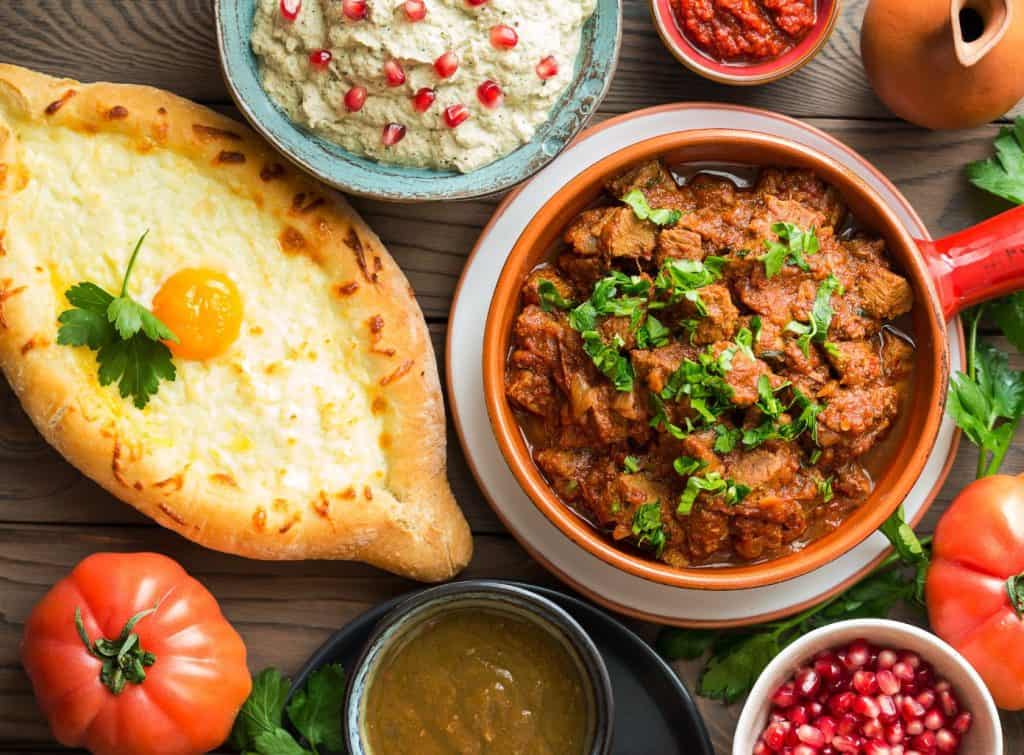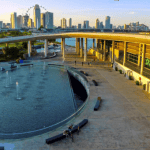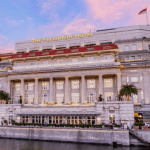Singapore is a melting pot of cultures, and one that stands out is the fascinating Peranakan culture. With its unique blend of Chinese, Malay, and Indonesian influences, Peranakan culture has played a significant role in shaping the nation’s heritage. In this article, we will delve into the origins, cuisine, art and craft, architecture, and the Peranakan Museum, uncovering the richness of this vibrant culture.
Understanding the Origins of Peranakan Culture
The Peranakan culture is a fascinating blend that emerged from the intermingling of Chinese immigrants and local Malays in Southeast Asia. This cultural fusion took place over centuries, resulting in a unique and vibrant community. The term “Peranakan” itself means “locally born” in the Malay language, reflecting the roots of this culture in the region.
At its core, Peranakan culture represents a beautiful amalgamation of Chinese and Malay influences. The early Chinese immigrants brought with them their customs, traditions, and language, while adapting to the local environment. Over time, the Peranakan community developed its distinct identity, with a rich tapestry of customs, traditions, and language known as Baba Malay or Peranakan Hokkien.
The Fusion of Chinese and Malay Influences
The essence of Peranakan culture lies in its fusion of Chinese and Malay influences, creating a harmonious blend that is visually stunning and culturally diverse. This unique hybridization can be observed in various aspects of Peranakan life, ranging from language and dress to architecture and cuisine.
Language plays a significant role in shaping the Peranakan culture. Baba Malay, a language derived from Malay with a mix of Hokkien dialect, is spoken by the Peranakan community. This linguistic fusion reflects the intermingling of Chinese and Malay influences, creating a distinct form of communication that is exclusive to the Peranakan culture.
Peranakan fashion is another fascinating aspect that showcases the fusion of Chinese and Malay aesthetics. Peranakan women, known as Nyonyas, are renowned for their elegant and vibrant attire. The traditional Nyonya kebaya, a blouse-dress combination, is adorned with intricate embroidery and vibrant colors, reflecting the cultural blend of Chinese and Malay influences.
Architecture is yet another domain where the Peranakan culture shines. Peranakan houses, also known as “Straits Chinese” houses, display a unique architectural style that combines Chinese, Malay, and European elements. These houses feature intricate carvings, colorful tiles, and ornate furniture, creating a visual feast for the eyes.
And of course, no exploration of Peranakan culture would be complete without mentioning its delectable cuisine. Peranakan cuisine, also known as Nyonya cuisine, is a tantalizing blend of Chinese, Malay, and Indonesian flavors. Signature dishes such as laksa, ayam pongteh, and kueh lapis showcase the harmonious fusion of spices, herbs, and cooking techniques from different cultures.
The Role of Peranakan Culture in Singapore’s History
Singapore owes much of its cultural richness to the Peranakan community. Since the early days of the nation, Peranakan families have played significant roles in shaping Singapore’s development. They have contributed to various industries such as trade, banking, and philanthropy, leaving an indelible mark on the country’s history.
Furthermore, the cultural practices and traditions of the Peranakan community have become an integral part of Singapore’s multicultural identity. Peranakan festivals, such as the elaborate Chinese New Year celebrations and the vibrant Peranakan weddings, are cherished events that bring people from different backgrounds together, fostering a sense of unity and diversity.
Today, the Peranakan culture continues to thrive, with Peranakan communities found not only in Singapore but also in other parts of Southeast Asia. The preservation and celebration of Peranakan heritage are essential in ensuring that this unique cultural blend remains alive and cherished for generations to come.
The Unique Peranakan Cuisine
When it comes to the Peranakan culture, one cannot ignore its mouthwatering cuisine. Peranakan cuisine is a delectable blend of Chinese, Malay, and Indonesian flavors, resulting in dishes that are rich in taste and spice.

The Signature Dishes of Peranakan Cuisine
Some of the popular signature dishes of Peranakan cuisine include Ayam Buah Keluak, a chicken dish cooked with black nuts; Babi Pongteh, a braised pork dish flavored with fermented soybean paste; and Laksa, a spicy noodle soup that tantalizes the taste buds with its complex flavors. Each dish embodies the unique combination of ingredients and cooking techniques that make Peranakan cuisine truly exceptional.
The Influence of Peranakan Cuisine on Singapore’s Food Scene
Peranakan cuisine has not only found a place in the hearts of locals but is also celebrated worldwide. The Peranakan flavors have influenced Singapore’s food scene, with Peranakan restaurants and hawkers serving up tantalizing dishes to locals and tourists alike. The intricately crafted flavors and vibrant colors of Peranakan dishes continue to delight and satisfy food enthusiasts from all walks of life.
Peranakan Art and Craft
Art and craft are essential aspects of Peranakan culture, reflecting the community’s creativity and aesthetics.
The Intricate Designs of Peranakan Beadwork
Peranakan beadwork showcases the remarkable skills and craftsmanship of the community. Intricate beadwork is used to embellish traditional Peranakan attire, such as the sarong kebaya and the kerongsang (brooch). The delicate designs and vibrant colors reflect the meticulous attention to detail and the rich cultural heritage of the Peranakan people.
The Colorful Peranakan Tiles and their Meanings
Colorful Peranakan tiles, also known as “kam chia” tiles, are another hallmark of Peranakan art and craft. These tiles are often used to adorn the facades and interiors of Peranakan houses, depicting various motifs and symbols. These tiles not only add visual appeal but also carry cultural significance, with each design symbolizing wealth, good fortune, longevity, or protection from evil spirits.
Peranakan Architecture in Singapore
The distinctive architecture of Peranakan houses is a testament to the community’s enduring legacy.
The Distinctive Features of Peranakan Houses
Peranakan houses, also known as “shophouses,” are characterized by their colorful facades, ornate motifs, and unique architectural elements. Elaborately carved timber screens, known as “jenkeng,” adorn the windows, allowing for privacy while still allowing natural light and ventilation. The architecture seamlessly blends Chinese, Malay, and European influences, resulting in an eclectic yet harmonious design.
Exploring the Peranakan Districts in Singapore
For a deeper immersion into Peranakan culture, a visit to the Peranakan districts in Singapore is a must. Areas such as Joo Chiat, Katong, and Emerald Hill are home to beautifully preserved Peranakan houses, quaint shops, and delightful eateries. Walking through these neighborhoods feels like stepping back in time, allowing visitors to experience the unique charm and vibrant heritage of Peranakan culture.
The Peranakan Museum: A Cultural Treasure Trove
The Peranakan Museum stands as a tribute to the rich Peranakan heritage and plays a crucial role in preserving the culture for future generations.

The Collections and Exhibits of the Peranakan Museum
The Peranakan Museum houses a vast collection of artifacts, textiles, and heirlooms that provide insights into the history, traditions, and lifestyle of the Peranakan community. Visitors can marvel at intricately embroidered Nyonya kebayas, rare Peranakan porcelain, and ornate silverware that reflect the opulence and elegance of Peranakan culture.
The Role of the Peranakan Museum in Preserving Culture
The Peranakan Museum serves as a platform for educating visitors about the Peranakan culture and encouraging the appreciation of its rich heritage. Through guided tours, interactive exhibits, and educational programs, the museum fosters an understanding of the Peranakan community’s contributions and ensures that their legacy will endure for generations to come.
As you delve into Singapore’s Peranakan culture, be prepared to be captivated by its unique blend of traditions, flavors, and artistic expressions. Exploring the sights, sounds, and tastes of Peranakan culture is an enriching journey that offers a glimpse into the vibrant tapestry of Singapore’s multicultural heritage.








